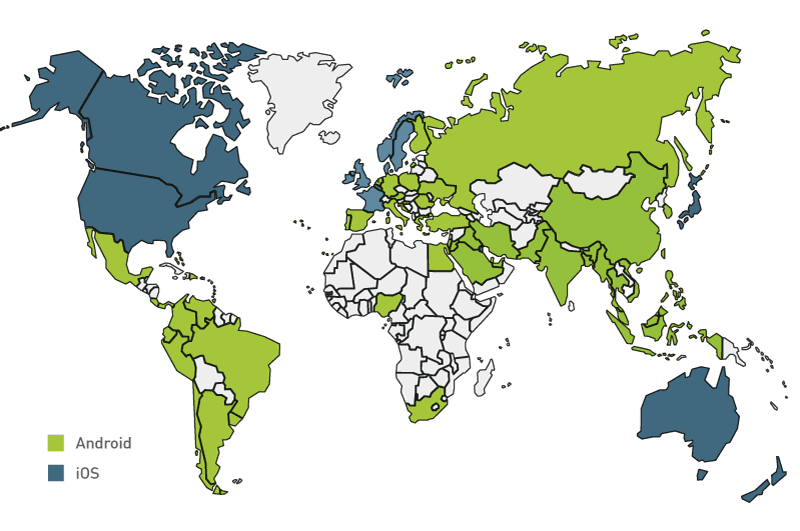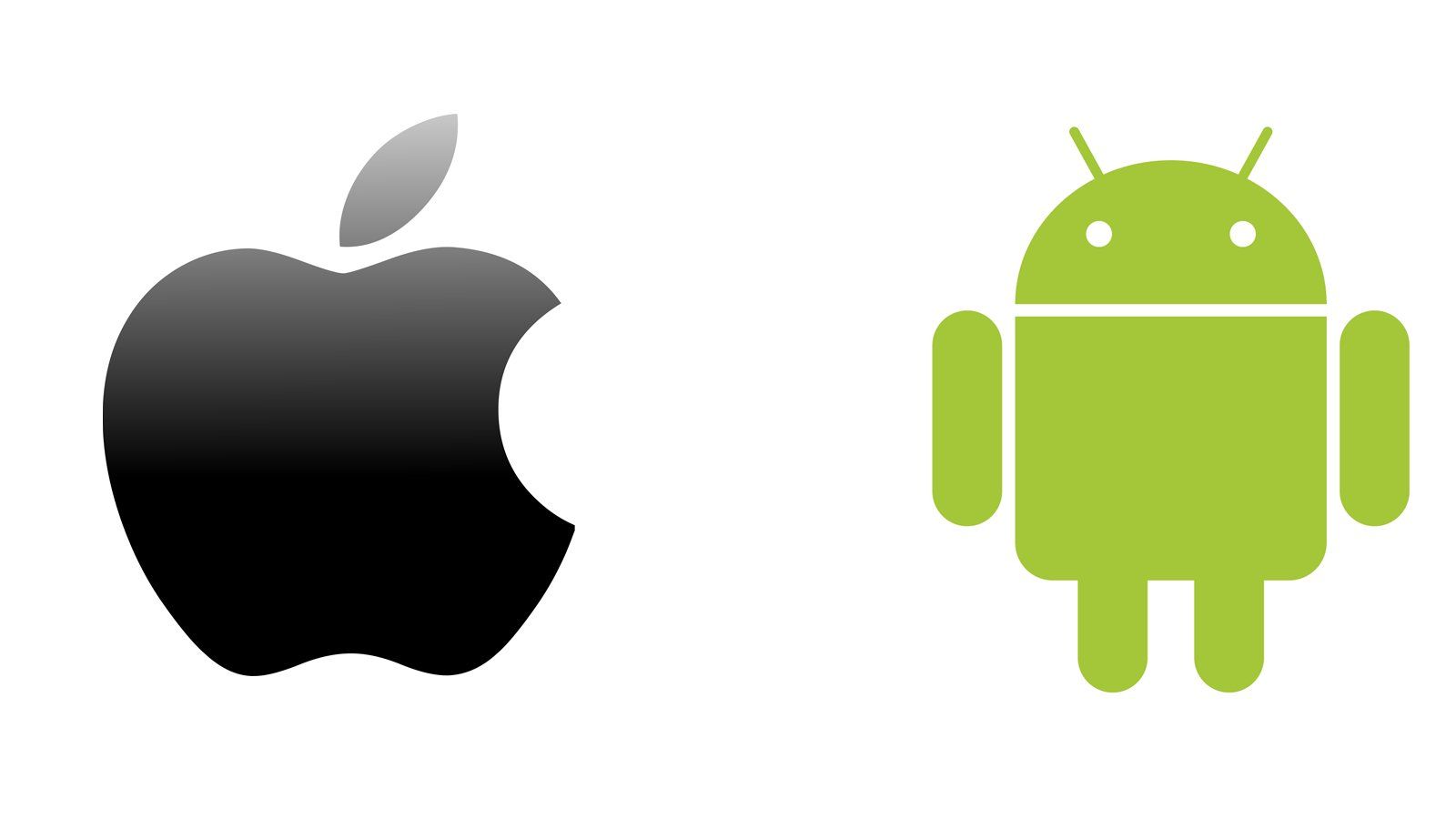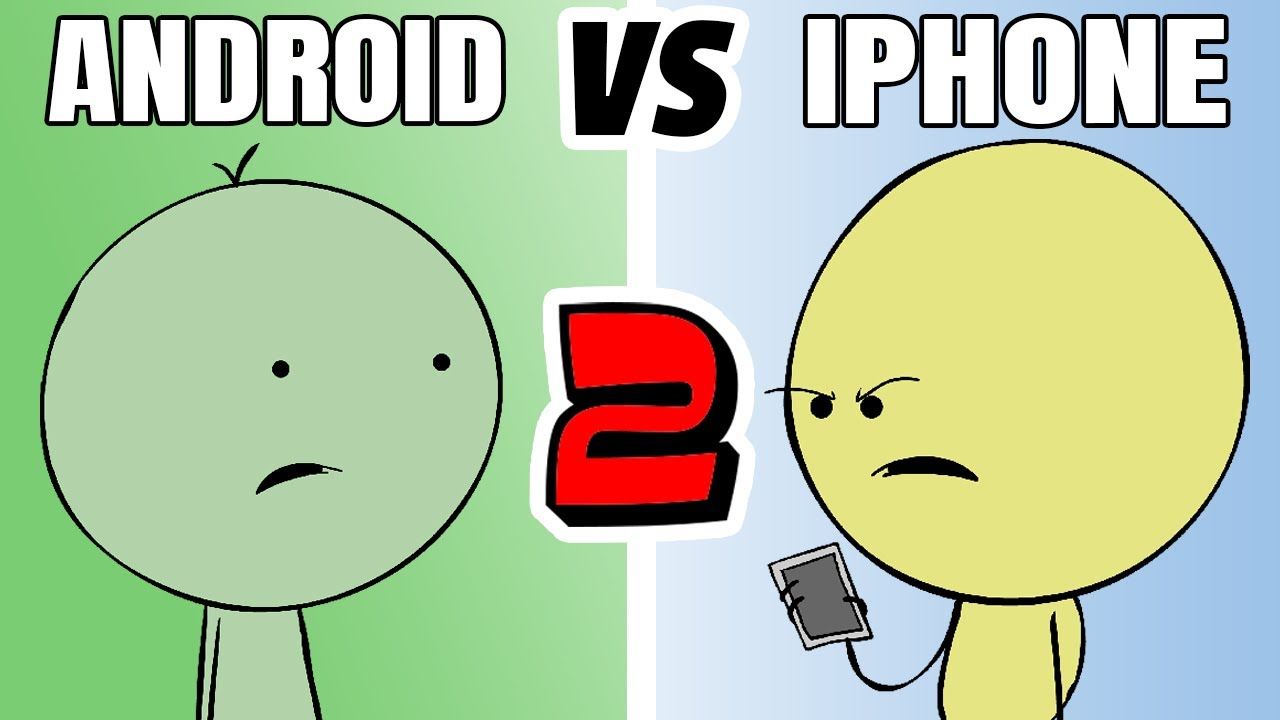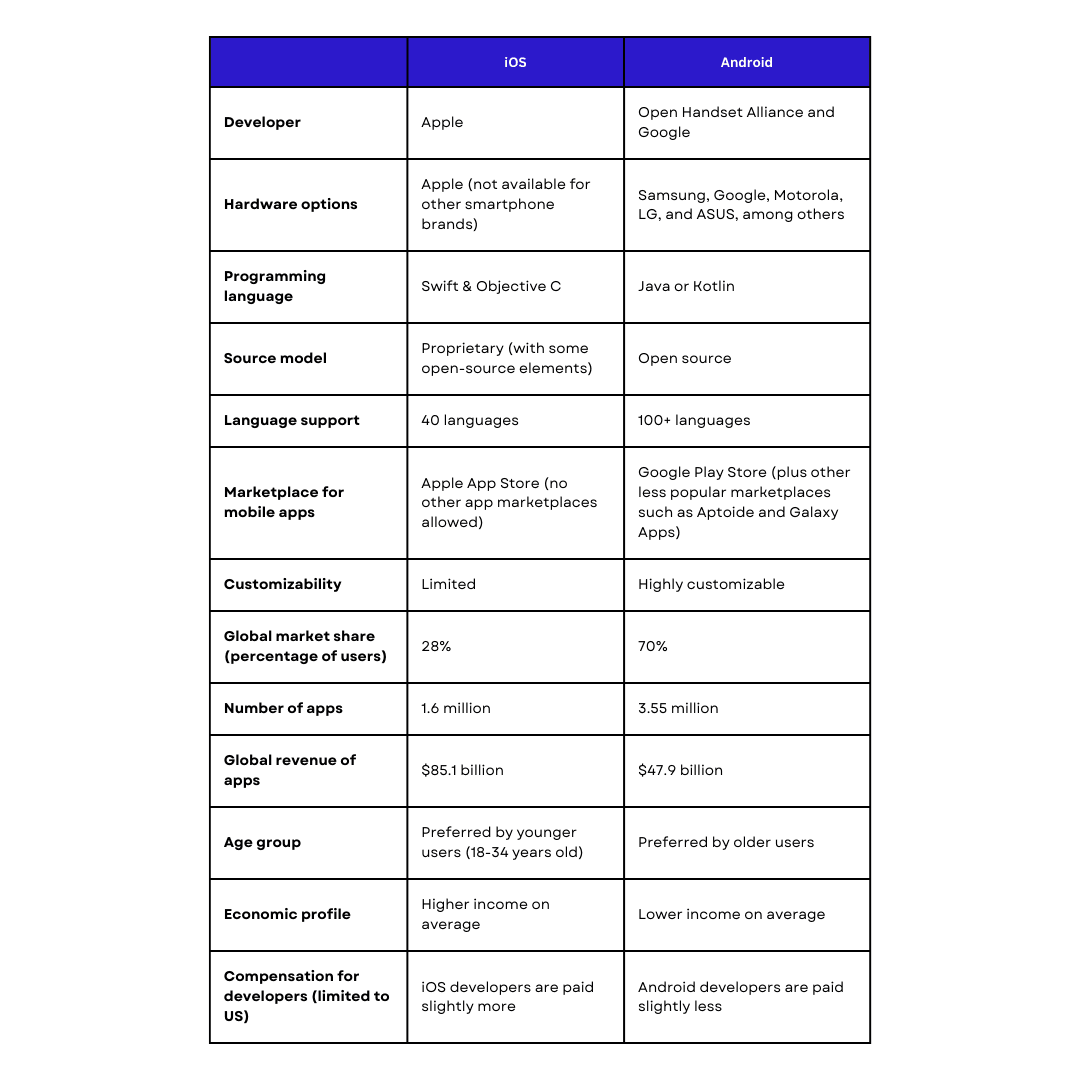iPhone and Android offer different sets of user personalities. When building mobile apps, organizations, startups, and enterprises need to know as much as possible about their diverse user base in order to meet their needs.
It seems like Apple (iPhone) and other brands that use Android are both releasing new smartphone models at the same time.
iOS and Android offer different sets of user personalities. When building mobile apps, organizations, startups, and enterprises need to know as much as possible about their diverse user base in order to meet their needs.
This guide will explain the key differences between iPhone and Android users, especially in terms of demographics and behavior. Based on these differences, this article also highlights the most important aspects to consider when choosing a platform. Corporate decision makers looking to strengthen their mobile development strategy should benefit from this.
1/ Android vs iOS Market Share:
Android and iOS form a duopoly in the global mobile operating system market, with Android holding approximately 70% market share and iOS holding approximately 28% market share as of August 2022. The share of iPhone and Android users in Europe (as of 2021) is 32.1% and 67.2% respectively, not much different.

However, while Android dominates the number of users and apps, iOS leads in global mobile app sales. According to data from market research firm SensorTower, consumer spending on apps in the Apple App Store will reach $85.1 billion in 2021, with spending on the Google Play store totaling $47.9 billion.
2/ Why is Android More Popular Globally While iOS Dominates the US?
In the second quarter of 2022, the iPhone will overtake Android-powered devices into the hands of US consumers for the first time since Apple introduced smartphones in 2007 (according to a report by Counterpoint Research). Apple now has over 50% of the US smartphone market share (referred to as the “active install base”).

There are several common reasons analysts often cite as to why an American generally prefers an iPhone to his Android device. Some say that’s because Apple is an American company and its devices (not just the iPhone) have long been an integral part of American popular culture. Some experts also say US consumers are more receptive to claims that the iPhone and iOS ecosystems are superior in terms of security and user privacy.
3/ iPhone vs Android differences in hardware and software
One noticeable difference, especially when moving from one platform to another, is that Android phones typically come with physical buttons for navigation, while iPhones have a fully touch-based navigation interface. This may be a matter of taste, but keep in mind that physical buttons on Android phones can be more convenient, especially if you use the device with one hand.
In terms of interface, the most noticeable difference is that Android users can customize their home screen by rearranging widgets and apps in various ways, while iPhone users are limited to a simpler grid layout. In general, Android phones have more customization options than the iPhone, and former Android users can tailor the look and feel of their phone to their personal taste.
4/ Demographics and Behavior: iPhone vs Android Users
Based on the latest published global data, here are some key points about the differences between Android and iPhone users:
- iPhone users tend to earn more than Android users. iPhones tend to attract premium or high-income customers.
- Premium and ultra-premium customers prefer the iPhone. Additionally, the iPhone has a 78% market share in his $1,000+ ultra-premium segment.
- Young users prefer iPhone, older generation prefers Android. In the elderly demographic, Android users lead her iPhone users. This seems to be in line with the US demographic, as iPhone leads the 18-34-year-old group with a 58% share compared to Android’s 42%.
- Customer loyalty to both platforms is high and stable. An Android user is slightly more loyal than his iOS user.
- Reasons to switch from one operating system to another – Among the reasons, users switch from iOS to Android and vice versa for better user experience, better features, and better price.

Other reasons that were less important for the platform switch were the desire for more apps, better customer service, and faster software updates.
- An Apple user feels safer than an Android user – It is difficult to assert that iOS protects a user’s security and privacy better than his Android user.
- Android users respond well to push notifications – Android apps tend to outperform iOS apps when it comes to user engagement with push notifications.
A key factor in this is that iOS does not allow apps to automatically opt users into push notifications, but Android does. For companies looking to monetize their apps through premium models, subscriptions, or in-app purchases, building on iOS seems like a better option.
5/ Aspects to consider when choosing a mobile app platform
To help you make these decisions, here are some of the key considerations when deciding to build your app on Android or iOS (or both).
- Target Markets and Demographics – If your app is aimed at users outside the United States and other high-income economies (such as the United Kingdom, Canada, and Japan) where iPhone is the market leader, launching on Android first is It may be the best decision for development. On the other hand, if the app is primarily aimed at a market where iPhones have a stronger presence than Android devices, iOS is a better choice.
It’s important to do some up-front research on which platforms your particular audience prefers.
- Consumer hardware option – iOS is only available on Apple devices and comes at a comparable premium.
- App Development Considerations (Technology, Cost, Duration, etc.) – As technical managers are well aware, there are many variables during the development phase. The technology choices are different, especially when weighing the implications of choosing between Android and iOS (or both).

6/ iOS and Android Comparison Chart
There are many ways to compare and contrast iOS and Android

7/ Conclusion – Getting to Know iPhone vs Android Users
There are many things to consider when developing mobile apps. Executives and project managers can explore technology options, cost implications, and project execution. One of the things that give a company an edge over its competitors is taking the time to understand the differences between its Android users and its iPhone users in their target market, and adjusting its products accordingly.
If you’re short on resources, or if your company is still testing product ideas, it might be worth considering being on only one platform. To do this, organizations need to understand who their users are and consider choosing between iOS and Android.






